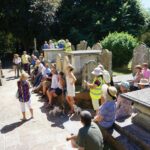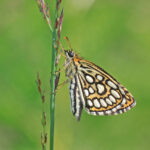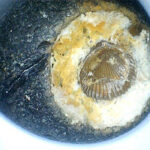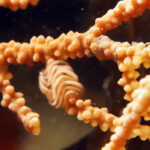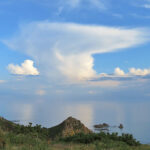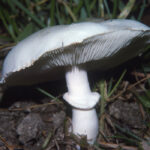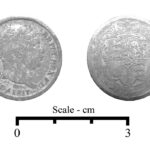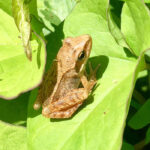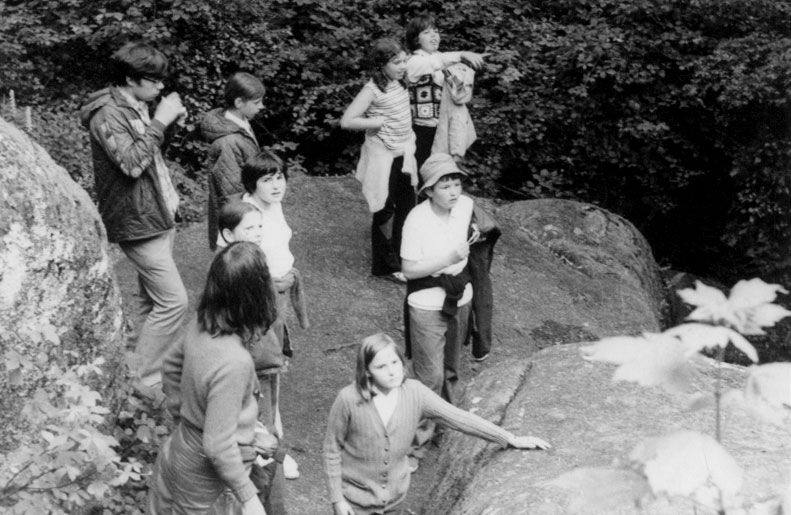

Photo: Chris showing the evolution of a hornet in the cell.
Chris Isaacs very kindly welcomed a group of us to his home to meet the hornets in their bullet proof plexiglass tank and inspect the old secondary nests that are hanging from the conservatory ceiling. Chris is still researching the Asian hornet life cycle and habits. He also helps with tracking them when time allows.
It’s known that the Queen emerges in the spring after hibernating through the winter. She builds a small primary nest, and then goes on to build a large secondary nest, helped by the workers. The workers are all female and some of these go on to become Queens. The workers feed the larvae, some of which hatch out as drones, and these drones are fattened up by the workers, and when ready to fly, take off to find a mate. If they return to the nest they are likely to be attacked by the workers. All the hornets have a limited lifespan and can only eat nectar and fluid. The larvae can consume protein, and this is fed to them by the drones. The most likely form of protein is insects, but any dead animal would provide a source of protein, although rotten meat isn’t consumed.
Asian hornets are unlikely to attack away from the nest, but they work as a group to protect the nest. Chris has opened up the side of the nest so that it’s possible to see the layers with all the cells in them, and the hornets still working away. He removed some developing hornets from the white silk cells so that we saw their evolution from larvae to hornet.
Many thanks to Chris for all his hard work in understanding this species and for being such a good host!







Photos, clockwise: 1 Secondary nests 2. Hornet cell evolution from right to left 3. Cells from a layer 4. The nest layers 5. Workers in the nest 6. The nest kept lit.
